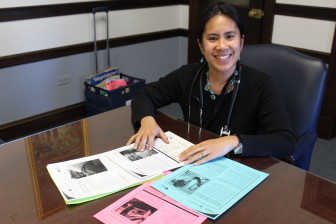From the Maplewood Health Department:
In this season of colder temperatures and winter colds, there is the common default to ask for antibiotics from our healthcare providers to get us back on track to our healthier selves. However, this practice of overusing antibiotics as a society may be doing more harm than good.
Antibiotic resistance is one of the world’s most pressing public health threats, according to the Centers for Disease Control and Prevention. It is estimated that more than half of antibiotics are unnecessarily prescribed to children by pediatricians for cough and cold illness, most of which are caused by viruses. An estimated 2 million illnesses and 23,000 deaths occur each year in the United States due to antibiotic-resistant infections. Overuse and misuse of antibiotics are main drivers of antibiotic resistance.
Often called superbugs, some bacteria are already resistant to most or all known antibiotics. Antibiotic resistance is not just a problem for the person with the infection. Some resistant bacteria have the potential to spread to others — promoting antibiotic-resistant infections.
The bottom line is that if we are not smarter about our consumption of antibiotics, the future of our children and other immunocompromised members of society may be at risk of aggressive bacterial infections that can no longer be treated with the limited spectrum of antibiotics that we have.
According to the CDC’s Get Smart campaign, here are six simple and smart facts about antibiotic use:
- Antibiotics are life-saving drugs. Using antibiotics wisely is the best way to preserve their strength for future bacterial illnesses.
- Antibiotics only treat bacterial infections, not viruses. If your child has a viral infection, it is recommended to use treatments like over the counter medicine, drink lots of water and get rest to alleviate symptoms.
- Some ear infections DO NOT require an antibiotic. Even some bacterial infections like mild sinus and ear infections can get better without antibiotics. The term, “watchful waiting” may be recommended by doctors; meaning waiting a few days to see if you get better before prescribing antibiotics.
- Also, most sore throats DO NOT require an antibiotic. Only 1 in 5 children seen by a doctor has strep throat, which should be treated with an antibiotic.
- Green colored mucus is NOT a sign that an antibiotic is needed. As the body’s immune system fights off an infection, mucus can change color. This is normal and does not mean an antibiotic is needed.
- There are potential risks when taking any prescription drug. Like any medication, antibiotics can cause complications ranging from upset stomach to serious allergic reactions.
Furthermore, the Maplewood Health Department would also encourage residents to do the following:
1. Keep up with vaccinations that can prevent diseases like pertussis or whooping cough and strep throat infections,
2. Wash your hands to prevent the spread of germs to yourself and to others, and
3. Practice good use: Take antibiotics as prescribed and throw leftover antibiotics away.
For more information, go to the CDC’s Get Smart campaign: www.cdc.gov/getsmart.


